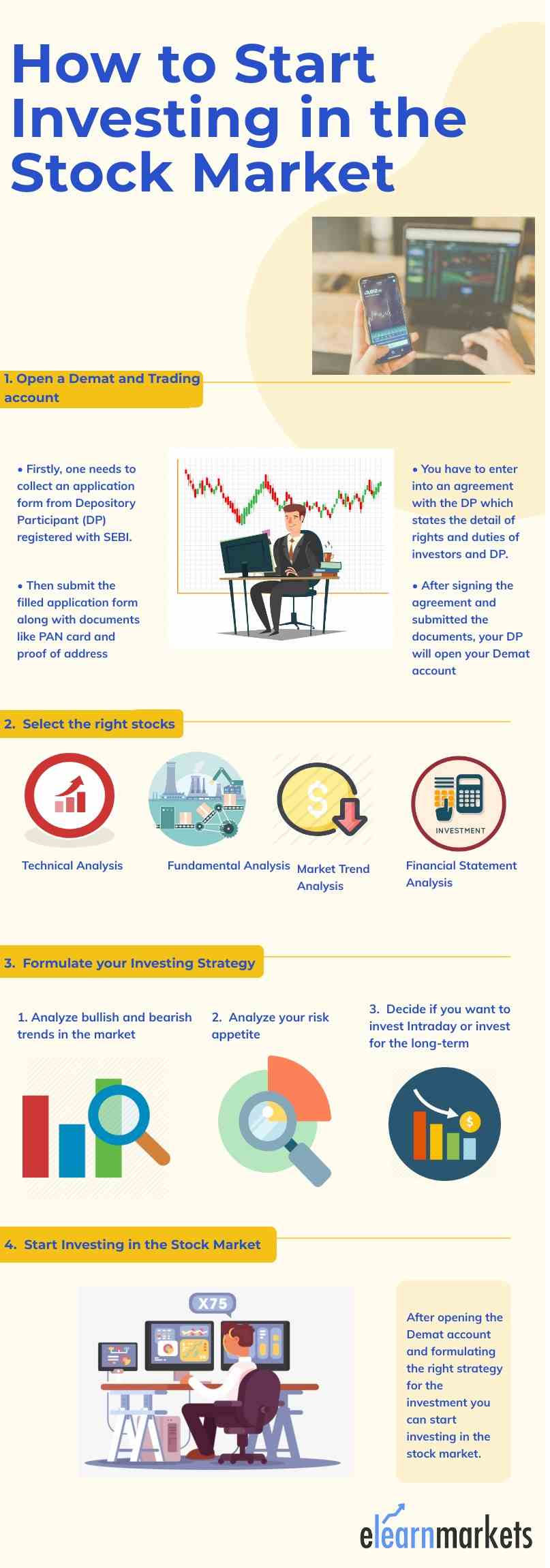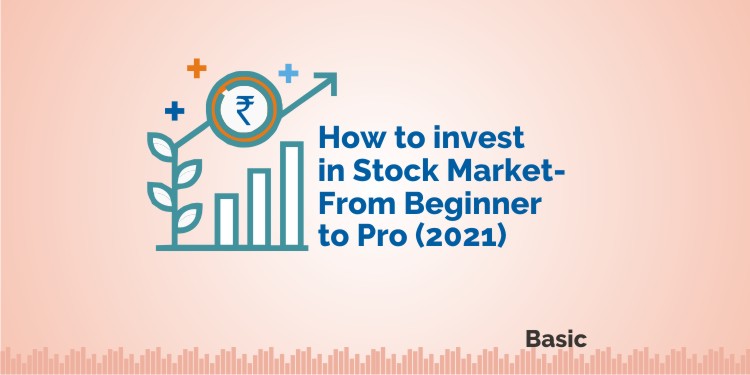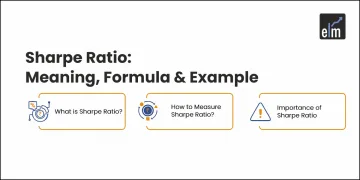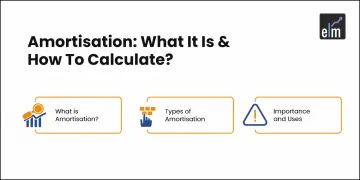You must have read a lot about investing in the stock market and how easy or how difficult it is to make money out of it, but once you decide on this, it is extremely important to understand clearly the process of investing in the Stock market.
We will teach you exactly how to invest in stock markets in this post.
This blog will be basically a journey from a beginner in the stock market to becoming a pro. So, Let’s dive in.
The first step is on how to start with this process, so this will start with opening a Demat account. Here we will understand what is a Demat account and how to open it.

1. Open a Demat Account and Trading account
To start investing in stock market, first, you need to open a Demat account.
A Demat account is an account that holds the financial securities in an electronic form. So before you invest in the stock market, it is necessary to have a Demat account.
Demat accounts in India, are maintained by two depository organizations, National Securities Depository Limited (NSDL) and Central Depository Services Limited (CDSL).
All the investments made in equities are credited to this account and debited once you sell your shares.
Buying and selling of the shares on the Demat account are automatically made once transactions are confirmed.
Below are the steps for opening a Demat account.
Steps to Open your Demat Account
- Firstly, one needs to collect an application form from Depository Participant (DP) registered with SEBI. To check for the nearest DP you can check the SEBI website
- Then submit the filled application form along with documents like PAN card and proof of address like Passport, Electricity bill, Voter ID card, Adhaar, etc.
- You have to enter into an agreement with the DP which states the detail of rights and duties of investors and DP.
- After signing the agreement and submitted the documents, your DP will open your Demat account and give you a 16 digit Demat account number.
Select the right stocks:
After opening the Demat account, we need to invest.
But how to invest in stocks?
How to pick stocks in intraday that earns?
To answer these question, you first need to pick the right stocks.
To select the right stocks we need to conduct the different types of stock analysis.
1. Technical Analysis
Technical Analysis is a method of predicting future prices based on the past movement of the stock’s prices.
We can predict whether the ongoing prices of the stocks will reverse or continue with the help of technical tools like technical charts and indicators.
Technical analysis helps the investors to take trading-based decisions like when to enter or exit the stock.
Technical analysis can also be used in different timeframes like hourly, daily, weekly, monthly, and so on.
2. Fundamental Analysis
Fundamental Analysis is a method of predicting future prices based on the past performance of the company.
Fundamental analysts study how the company has performed in the last few years and based on that they predict how the company will perform in the future.
They take the help of the financial statements and annual reports to study how the company performed in the past.
Fundamental analysis is mainly done by those investors who want to do long-term investment in the stock market.
3. Market Trend Analysis
Before you invest in stocks, you should know whether the market is on an uptrend or in a downtrend.
If the market is in the downtrend then you should wait for the market to bottom down, and then start investing in the stocks.
Similarly, if the market is in the uptrend then you should avoid buying the stock as the market is already up and prices of the stocks have already risen.
4. Financial Statement Analysis
To analyse how the markets have performed in the past, traders conduct financial statement analysis.
It involves doing ratio analysis such as find out the debt equity ratio, price earnings ratio, liquidity ratios, and so on.
This analysis is mainly conducted to analyze whether the company will perform in the future or not.
Start analysing financial data of a comapny for free on StockEdge
Formulate your Investing Strategy
After selecting the right stocks for investing in the stock market, you need to formulate an investment strategy which can be done in the following ways.
1. Analyze bullish and bearish trends in the market
First, we need to analyze whether the market is in the bullish or bearish trend while formulating our investing strategy.
If the market is too bullish and the stock prices have increased then we should avoid buying any new shares and we should sell those which we had already bought at the lower price.
Similarly, if the market is too bearish and the stock prices have decreased then we should start accumulating shares for our investment as the market may reverse soon.
2. Analyze your risk appetite
While formulating your investing strategy you should also determine your risk appetite. Risk appetite refers to the amount of risk that you as an investor is willing to take based on your financial goals and objectives.
The investors can be divided into:
- Conservative investor: This type of investor’s risk appetite is low and they focus on investing in stable and low-risk investment options.
- Moderate investor: This type of investor’s risk appetite is neutral.
- Aggressive investor: These types of investors like taking risks and they adopt an over-optimistic approach when they invest in stock markets.
3. Decide if you want to invest Intraday or invest for the long-term
Also, while formulating our investing strategy we should also determine if we want to trade Intraday, invest for the long-term or want to earn in swing trading.
If we want to trade intraday then we need to create a trading strategy that involves squaring off our position on the same day.
If we want to invest in stocks for the long term then we need to create a long-term investment strategy that involves holding the stocks for more than one year.
Things to keep in mind for Intraday Trading
If we are planning to do intraday trading then the following points should be kept in mind:
1. Going Short in Intraday
Traders can first sell the stock and then buy later if they feel that the prices of the stock will go down during the same trading session.
They should consider various technical parameters like volume, technical indicators, and candlestick patterns before deciding to go short.
2. Risks associated with going short
One of the biggest risks which are associated with short selling is the potential for infinite loss.
Thus the traders should always put a stop-loss when placing the short selling order from their trading account.
3. Going long in intraday
Traders can buy the stock and then sell later if they feel that the prices of the stock will go up during the same trading session.
When you take an intraday trade strategy then your sole focus is buying stocks at the least price and selling it at the highest price.
You should consider various technical parameters like volume, technical indicators, and candlestick patterns before deciding to go long in intraday trading.
Learn more about how to invest in stocks in intraday.
4. Types of orders in Intraday
Investors should also know about the different types of trading orders in intraday:
- Market Order: This is the simplest order which involves placing buy and sell orders at the market price.
- Buy Limit Order: It is an order to buy that is placed below the ongoing price.
- Sell Limit Order: It is an order to sell that is placed above the ongoing price.
- Buy Stop Order: It is an order to place buy stop-loss which is placed below the buy price.
- Sell Stop Order: It is an order to place a sell stop-loss that is placed above the selling price.
Things to keep in mind in Cash and Carry Trading
When you are doing Cash and Carry trading, remember to note down the following points:
1. Identify how long you can hold on to a stock
Taking your financial conditions into account decide how long you can hold the stock i.e whether for weeks, months, years and so on.
2. Decide your Time-horizon
If you are planning to invest in stock market for the long term, you also need to decide on your time horizon, whether you want to invest for a long-term or short-term. If you invest in stocks for a long-term then price changes in market every day should not concern you much.
If you are investing in short-run then keeping a regular check on the stock prices becomes crutial for you.
3. Start Investing in the Stock Market
After opening the Demat account and formulating the right strategy for the investment you can start to invest in stock market. After following these trading rules you are ready to invest in stock market.
You can also watch the video below on How to start trading in the stock market:
Key Takeaways
- To invest in stock market, first, you need to open a Demat account.
- A Demat account is an account that holds the financial securities in an electric form. So before starting investing in the stock market, it is necessary to have a Demat account.
- After opening the Demat account, we need to select the right stocks for investing in the stock market.
- Technical Analysis is a method of predicting future prices based on the past movement of the stock’s prices.
- Fundamental Analysis is a method of predicting future prices based on the past performance of the company.
- After selecting the right stocks for investing in the stock market, we need to formulate your investment strategy.
- While formulating your investing strategy you should also determine your risk appetite.
- Also, while formulating your investing strategy you should also determine if you want to trade Intraday or invest in stock for the long-term.
- Taking your financial conditions into account decide how long you can hold the stock i.e whether for week, months, years and so
Wish to understand more about the financial markets? Join our courses on financial markets to enhance your knowledge.
You can learn the same through our share market full course in hindi free as well.
Happy Investing!






